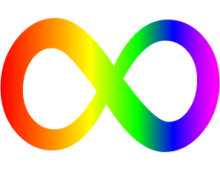
Find yourself swamped with work but unable to focus? Ever wonder how to quit procrastinating? At OITE, we often get asked about strategies and tips on how to improve one's time management and productivity. This From the Archive post offers unlikely advice on how to handle these work challenges.
The title seems a little contradictory. How is it that you can get more work done, but spend less time working? According to a New York Times article about a study from the University of Toronto Scarborough, it is because small breaks make you more efficient. The study authors suggests that the brain “becomes fatigued after sustained use and needs a rest period before it can recover, he explains — much as a weight lifter needs rest before doing a second round of repetitions at the gym.” So here are a few of the tips from the article:
- Symptoms of needing to take a break are drifting or day dreaming.
- If you are in “the zone,” keep working. It isn’t working hard that drains your brain, it’s when you are forcing yourself to go on when you really need a break.
- Taking too many breaks leads to procrastination. So, be smart about it. Everything in moderation
Here are a few ideas for break:
- Go for a walk – Even just doing laps on your floor gets you moving and gives you a break from your work. If you are at the NIH and don’t want to melt in this heat wave, consider walking the track in the basement of building 10.
- Go get a coffee (or something else) with a co-worker – After all, you have to walk to where the coffee is and having someone with you makes it less likely you will just sit and start thinking about work. According scientists who have spent time in England, many labs there still take a break in the afternoon for tea (or other beverage) for about 30 minutes. In fact, there is often a break in the morning as well for around the same amount of time.
- Stand at your computer while you read the OITE Careers Blog – The article mentions that standing while doing your work can help relieve some of the brain drain.
- Take a nap – We are aware this is not a culturally acceptable practice here in the USA, even if it is supported by science. However, in other cultures a break in the afternoon to rest is quite common. The Spanish Siesta is famous, and so I asked a visiting fellow and friend from Spain about how the “Siesta” works in the research community. She pointed out the siesta is as much about food as it is about sleep. The main goal is to sit down together around the table and have a meal as a family or group of friends. If you can grab a siesta in that time, that’s even better.
Working hard is a hallmark of the research profession. Most scientists I know take a lot of pride in putting in long hours. We are certainly not suggesting that any of us not work hard. However, research suggests that taking breaks can help us work smarter as we work hard. And isn’t that what we all want to do?




